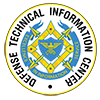Battelle Wins US DoD Contracts to Support AFRL
Battelle has secured two contracts from the US Department of Defense (DoD) to support the US Air Force Research Laboratory’s (AFRL) Sensors Directorate. Under the Microelectronics and Embedded Systems Assurance (MESA) contracts, worth $23m, the company will help the country keep counterfeit and untrustworthy integrated circuits and embedded systems out of the military supply chain












